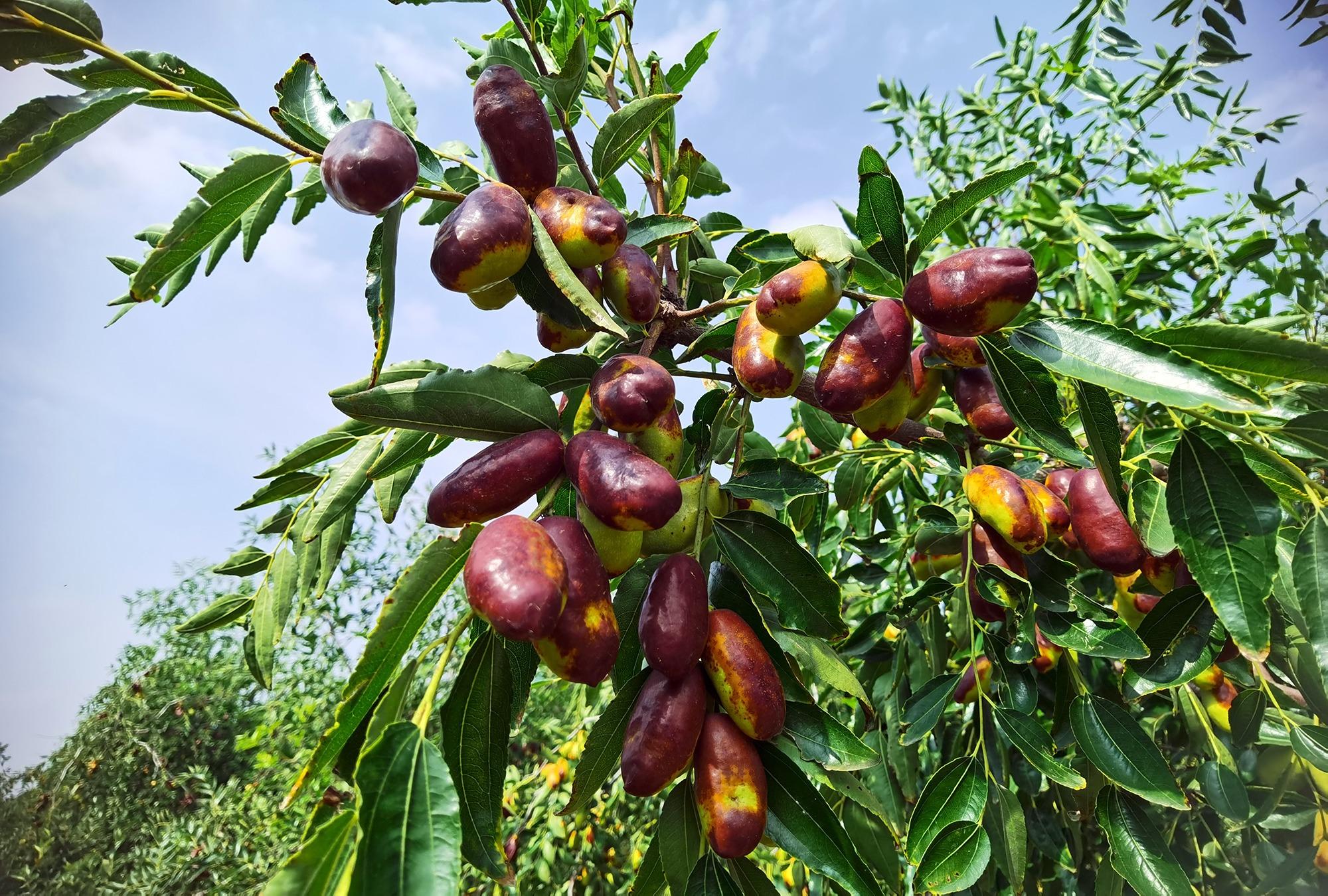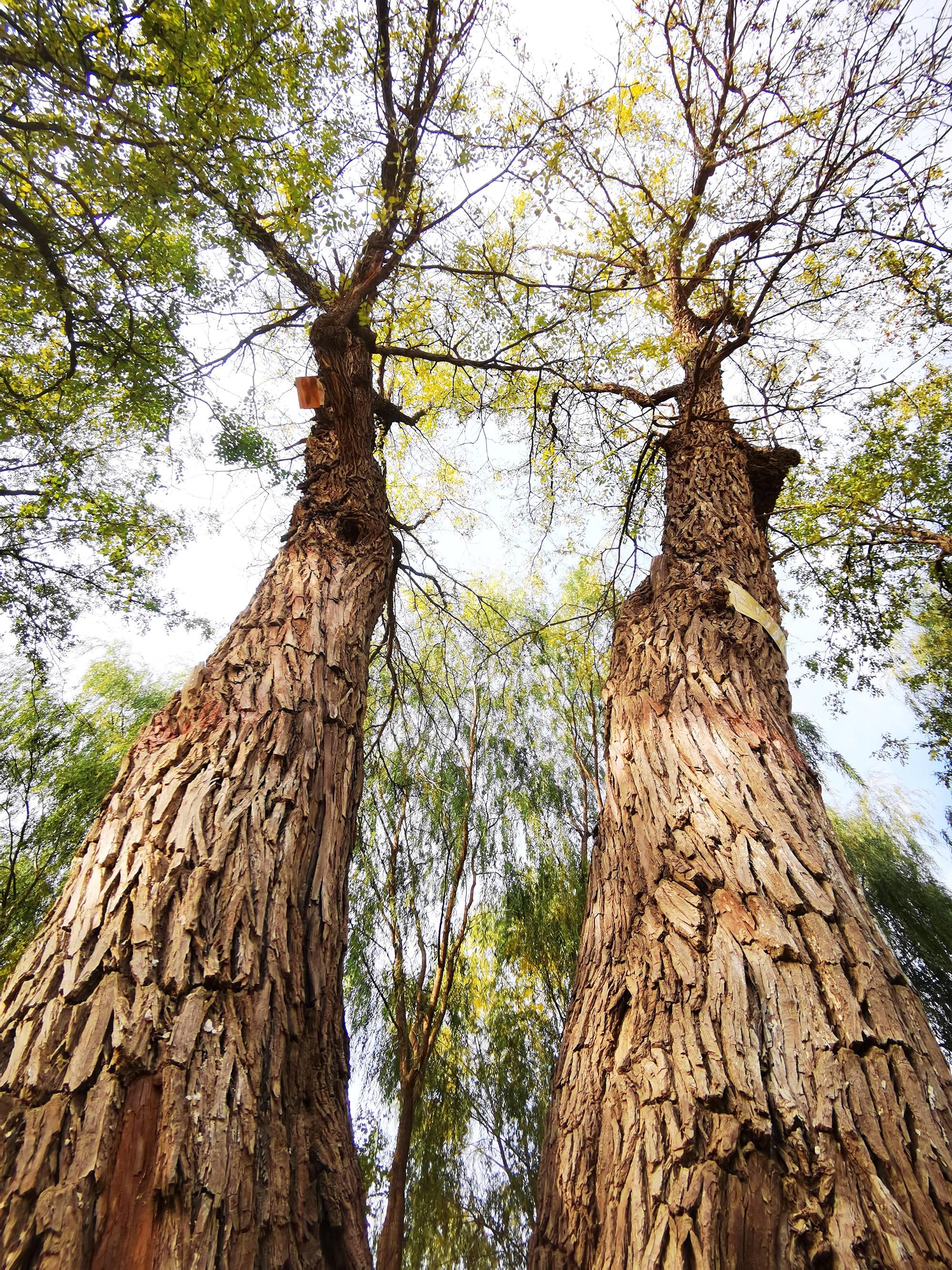 Ripe jujubes on trees growing at the Lingwu World Jujube Trees Expo Park in Lingwu, Ningxia Hui autonomous region. (PROVIDED TO CHINA DAILY)
Ripe jujubes on trees growing at the Lingwu World Jujube Trees Expo Park in Lingwu, Ningxia Hui autonomous region. (PROVIDED TO CHINA DAILY)
A natural park with one of the world's largest and oldest jujube forests allows residents in Lingwu, Ningxia Hui autonomous region, to enjoy pastoral scenery while tickling their taste buds.
Its broad collection of jujube trees and its germplasm resource bank also contribute to scientific research and better preservation of the plant.
Built in 2009, the Lingwu World Jujube Trees Expo Park has 4,167 jujube trees. About 62 percent of them are ancient, with the oldest being 277 years old.
People of all ages can enter the park and observe the trees, eat jujubes and exercise free of charge. More than 100,000 tourists have visited since its opening in 2010.
Zou Xuanxuan, an 8-year-old from Qinghai province, was excited as he picked jujubes off the ground at the park. With one bite, his mouth was filled with fruit juice.
His mother, Zhao Meng, said the fruit in the park tastes better than those found at the supermarket, and the color is more enticing.
Zou Sanshan, her husband, said: "The management is also good, and the park has a clean and tidy environment. There are areas available for people to enjoy leisure activities and exercise. This is a window to showcase the most beautiful ecological landscapes of Lingwu."
Years ago, an impoverished village occupied the land where the park is now. In 2008, Lingwu relocated 1,922 families living among the ancient jujube trees and resettled them in residential areas featuring better infrastructure.
"The city has become green and beautiful thanks to the trees, and the existence and roots of the trees have become symbols of the city's spirit and its historical significance," said Kang Zijun, director of the city's urban landscape greening and maintenance center. "The park has a natural oxygen environment and has provided the best leisure, entertainment and fitness facilities for the residents of Lingwu."
 The park has more than 4,000 jujube trees. (PROVIDED TO CHINA DAILY)
The park has more than 4,000 jujube trees. (PROVIDED TO CHINA DAILY)
The park has 326 species of jujube trees, about half of all the species found in China. Staff members have conducted research on the rejuvenation and revitalization techniques of the ancient trees. Age determinations and classifications have also been carried out.
In addition, studies on growth indicators and the economic characteristics of the fruits have been conducted. Among the trees in the park, the most unique species is the long jujube, whose fruit is a specialty and a national geographical indication product in Lingwu.
Compared to winter jujubes, long jujube trees are tall and upright. The fruit has a short ripening period, early maturity and high productivity, and is large and elongated or cylindrical in shape, according to Tang Wenlin, senior forest engineer at the Lingwu Natural Resources Bureau.
Fresh long jujubes have 25.3 percent sugar, 68.6 percent water and contain 378.8 milligrams of vitamin C per 100 grams of fruit. They also have a large amount of adenosine triphosphate, a nucleotide that helps stave off cancer, Tang said.
The Lingwu jujube tree has been cultivated for 1,300 years and was used to pay tribute to the imperial court during the Tang Dynasty (618-907). Since 2003, this ancient variety has been massively developed, with a total planting area of about 4,533 hectares.
"In recent years, sales of Lingwu jujubes have been booming and have played a significant role in promoting economic development," Tang said. "We have training classes for farmers to improve taste and production, and we sell the fruit both online and offline. The products have been sold across the country and to Thailand and Russia."
Contact the writers at chenmeiling@chinadaily.com.cn


